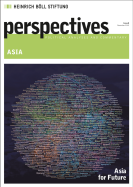
Cultural Expression
Culture is the human response to geographical context. The manner in which communities dress, design houses, eat, celebrate and even the manner language sounds have evolved are inspired by surrounding natural environments. The manner in which social groups traditionally create livelihoods depends on harnessing available natural resources. Climate crisis is a manmade circumstance that inevitably impacts geographies and, in turn, implies pressure to reconfigure or recollect cultural responses in order to survive.
The fact that the pace of global warming is increasing in India has impacted communities such as those in the Himalayas. In the last decades, glaciers have melted in Ladakh. These communities have suffered flash floods that have washed away their homes and crops, leaving them displaced and in utter poverty. Many of them have moved higher up from the river or migrated. However, the older members remain helpless.
The growing cultural mindset, more aligned with the capitalist economy and a distorted version of development, has impacted the traditional fabric of several Himalayan societies including marginalization of traditional wisdom that was in sync with maintaining a balance with the environment. Recent projects to widen roads have led to deforestation and tampering with river beds. There is a dependence on tap water and western models of development have resulted in delinking community environmental cultural practices. For example, many areas had community ownership (like sacred groves), rituals, and participation regarding women and water. For instance, in Uttrakhand, the night after the wedding a new bride was taken to worship a spring, lake or river from where her home acquired water. Even today, women join to perform Jal Yatras (water pilgrimages).
Climate crisis, distorted contours of ‘development’ is human-made, and it is only the recollection of traditional wisdom that will allow communities to come to re-group, to own responsibility and collectively address this approaching apocalypse.
Dr. Navina Jafa is Vice President of Centre for New Perspectives, a non-profit think tank,
and is a well-known curator, writer, interpreter, and presenter of and on Indian
heritage and culture.
Climate crisis is a manmade circumstance that inevitably impacts geographies and, in turn, implies pressure to reconfigure or recollect cultural responses in order to survive.Dr. Navina Jafa
Media
Pursuing policy level reportage on climate change requires a more cross-silo and thematic approach.Indrajit Bose
The Indian media’s response to the climate crisis has been tepid. Coverage is largely event-centric and not process-centric. This enables an unfortunate delinking between long-term processes, such as climate crisis, and the events that showcase symptoms of these processes, such as increased intensity of drought, heat waves or changes in weather and climatic patterns.
The Indian media’s commercial model, which earns a majority of its revenue from corporate and government advertisements – and not subscription – further skews the areas it focuses on, and it is blind-sided too. The issues of more vulnerable sections of rural population, with relatively lower purchasing power, consequently find lesser reflections. Climate change’s impacts, faced disproportionately higher by this segment of population, fall within this ignored set of issues.
Traditionally, the newsrooms are hardwired to work in silos. Climate change is tracked by journalists who cover the ‘environment ministry’ beat. Pursuing policy level reportage on climate change requires a more cross-silo and thematic approach that cuts across traditional ‘beats’. I believe journalists also need to understand the energy and power sectors better for a more holistic reporting approach.
That said, the heightened sense of alarm about air pollution in the urban areas has brought to bear somewhat more focus on the subject of climate crisis. Although, coupling of the two – the challenge of localized air pollution with the challenge of climate crisis and greenhouse gas emissions – has led the media to unidirectional approach to the subject in its coverage.
Over time, even though coverage may have improved, quality remains a challenge. This can be partially overcome by carefully crafted and more concerted engagement to enhance capacities of the traditional media and the journalistic fraternity. The social media engagement with the climate crisis is bound to gain with such a deeper and more carefully crafted support that addresses the peculiar weakness of Indian media-scape.
Indrajit Bose is Senior Researcher with Third World Network. He works on global climate policy.
Reference: Perspectives Asia, Issue 8, November 2019






